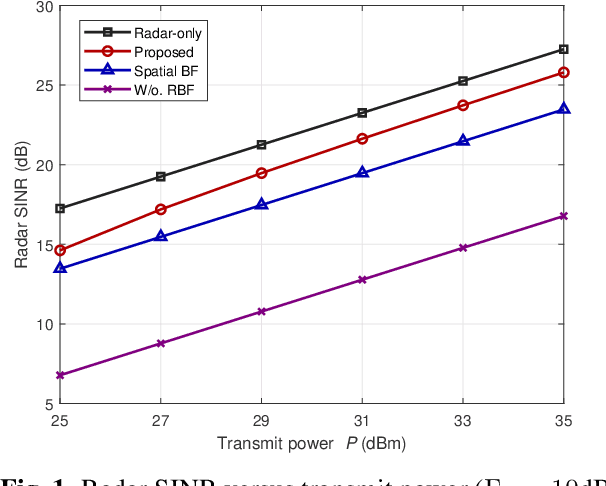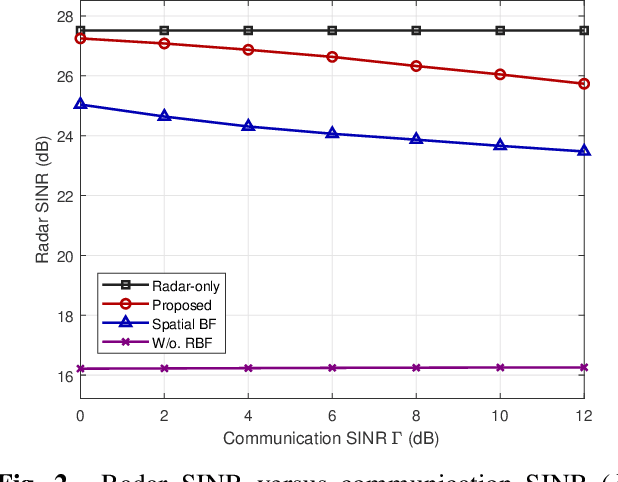Joint Space-Time Adaptive Processing and Beamforming Design for Cell-Free ISAC Systems
Paper and Code
Oct 18, 2024

In this paper, we explore cooperative sensing and communication within cell-free integrated sensing and communication (ISAC) systems. Specifically, multiple transmit access points (APs) collaboratively serve multiple communication users while simultaneously illuminating a potential target, with a separate sensing AP dedicated to collecting echo signals for target detection. To improve the performance of identifying a moving target in the presence of strong interference originating from transmit APs, we employ the space-time adaptive processing (STAP) technique and jointly optimize the transmit/receive beamforming. Our goal is to maximize the radar output signal-to-interference-plus-noise ratio (SINR), subject to the communication SINR requirements and the power budget. An efficient alternating algorithm is developed to solve the resulting non-convex optimization problem. Simulations demonstrate significant performance improvements in target detection and validate the advantages of the proposed joint STAP and beamforming design for cell-free ISAC systems.
 Add to Chrome
Add to Chrome Add to Firefox
Add to Firefox Add to Edge
Add to Edge